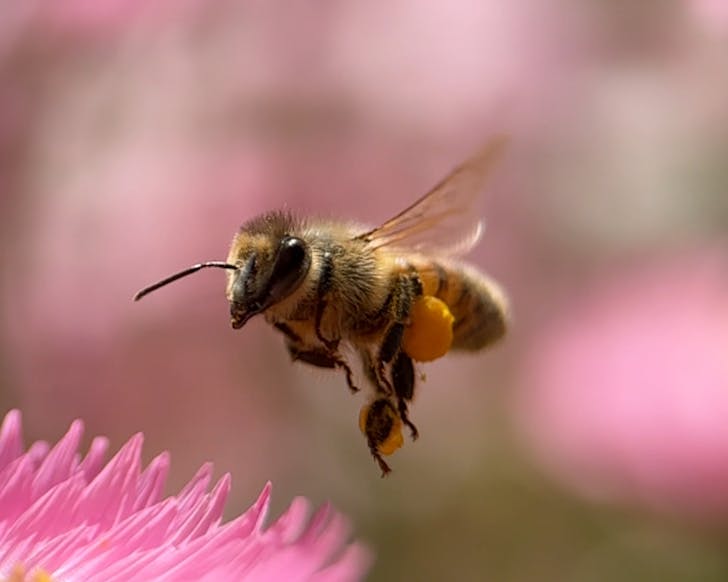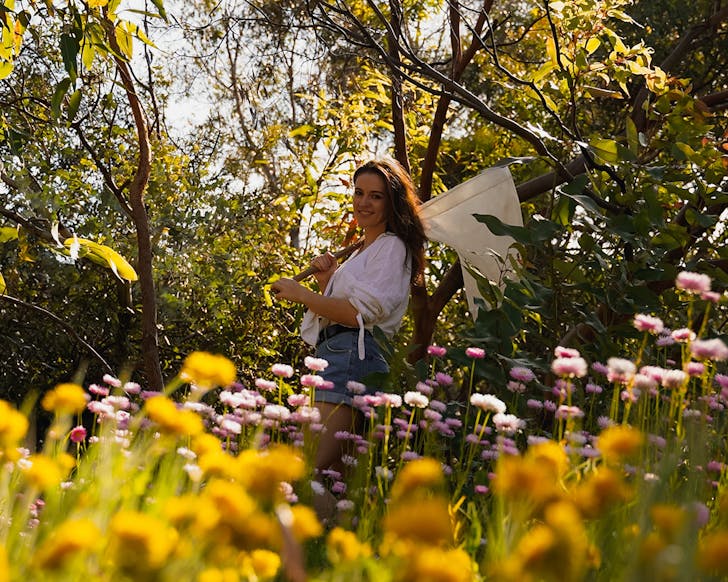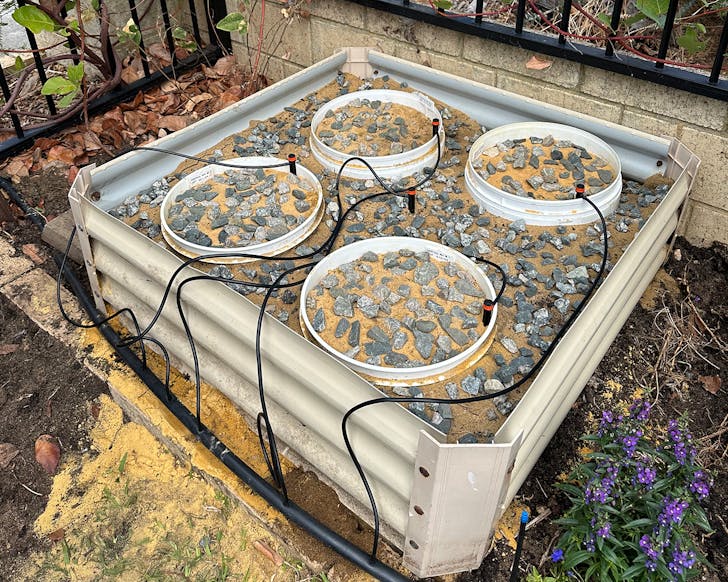This West Aussie Student Has An Inventive Plan To Save Our Native Bees
Welcome to Good News Stories, a feature series where together with Murdoch University, we’re shining a spotlight on the people and West Aussie businesses sparking positive change.
Perth-based PhD student Freya Jackson has been studying the decline in native bees for half a decade—and her ‘bee bed’ may just be the solution to saving them.
What most people don't know about native bees is that 75% of them don't nest in hives. Instead, they prefer to head underground in solitude. But urbanisation and habitat disturbance from fake lawns and paving have left them unable to shelter and protect themselves from predators.
Together with Murdoch University, we spoke to Jackson about how she found herself 5,000km away from home, getting cosy with the Lasioglossum dotatum native bee in the hopes of helping save the beloved black and yellow insect.
“I found out that honey bees are just one of over 20,000 bee species worldwide.”

A master’s student in Auckland studying honey bees, Jackson discovered that high densities of the introduced species were harmful to our native bee populations. So she decided to pack up and move her studies across the Tasman Sea to Australia—home to over 2,000 native bee species.
“Western Australia is a native bee hotspot, presenting the perfect opportunity to raise awareness about native bees and their vital ecological roles,” says Jackson. Unfortunately, according to Biological Conservation, 40% of all insect species are in decline, with a third considered endangered.
“Globally, the decline in insect populations has been alarming," Jackson says. "This is especially concerning in bees because of the crucial role they play in pollination—a vital ecosystem service for food production and biodiversity."
Native bees, like the Lasioglossum dotatum that Jackson works with, are particularly important because they’ve co-evolved with native plants and provide unique pollination services that honey bees can’t.
“Habitat loss is a major driver in this decline, as urbanisation, agriculture, and land clearing reduce the areas available for nesting and foraging,” she says.
"This motivated me to explore new ways to create and protect habitat for ground-nesting bees."

Designed for easy use in backyards across Western Australia, Jackson’s ‘bee bed’ is simple but effective. A system of large, transportable buckets filled with a mix of sandy soil and rocks, it was water management that posed the biggest challenge with Perth’s dry climate.
“I designed a simple elevated water system using a 9-litre plastic bucket with an irrigation spike that slowly released moisture into the soil-filled buckets, ensuring the ground stayed slightly moist without becoming waterlogged,” she says.
To test her work, Jackson installed the prototype at the home of a local gardening content creator, Rewilding Suburbia. There, she saw a huge uptake in native bees burrowing.
“You don’t need a complex setup to make a difference.”

According to Jackson, you don't even need to follow her design to help native bees in your backyard. Just leaving a small, undisturbed patch of soil with a slow-drip irrigation system can provide space for native bees to nest.
“Make sure to keep it weeded and free from vegetation growth, and use sandy soil and scatter some pebbles across the surface to encourage bee nesting,” Jackson says. “By making these small efforts, you can transform your backyard into a welcoming haven for native bees.”
Looking forward, Jackson hopes her bee beds won't just serve as a model for enhancing native bee populations, but become a valuable tool for conservationists, land managers, and farmers.
"By promoting native bee nesting and creating flexible solutions, we can help enhance crop pollination, support biodiversity, and mitigate human-wildlife conflicts," she adds.
The university of choice for people who want to make a positive environmental impact, Murdoch University is committed to changing lives for the better through accessible education and research. Find out how here.
This article is sponsored by Murdoch University and proudly endorsed by Urban List. Thank you for supporting the sponsors who make Urban List possible. Click here for more information on our editorial policy.
Images: supplied
